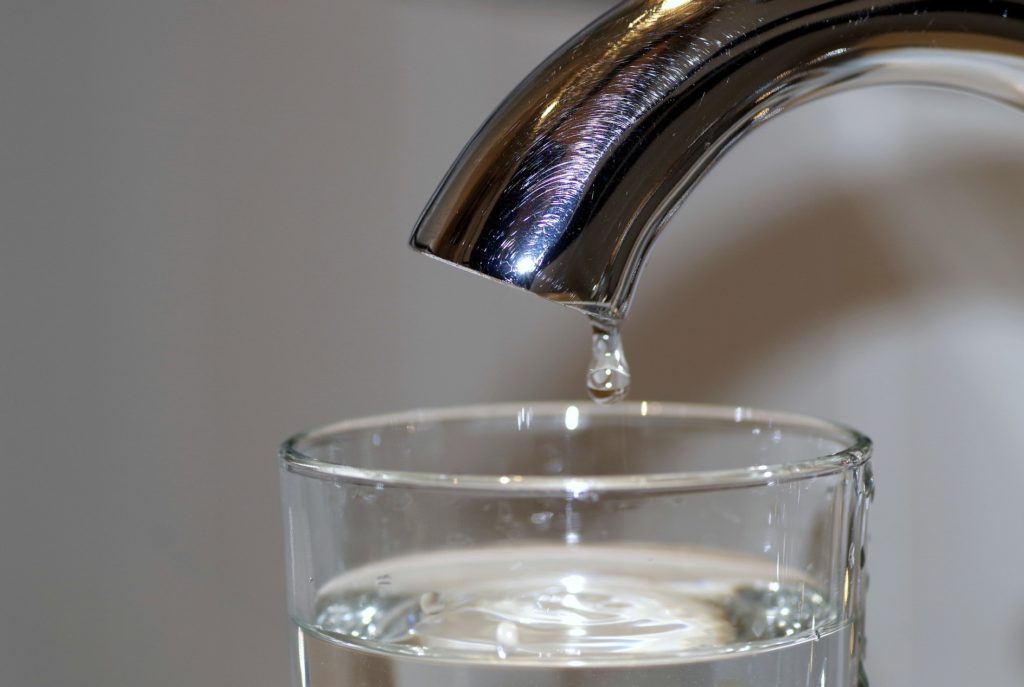Techniques to Address Low Water Pressure in Your Home
Techniques to Address Low Water Pressure in Your Home
Blog Article
What're your concepts about 4 Ways to Troubleshoot Low Water Pressure?

Low tide pressure in your home can be an aggravating trouble, influencing whatever from bathing to cleaning meals. If you're experiencing weak water circulation, there are a number of feasible reasons and options to discover. In this guide, we'll review typical factors for low water stress and useful steps to address the problem successfully.
Introduction to Low Tide Pressure
Low tide stress takes place when the flow of water from your taps, showers, and various other fixtures is weak than common. This can make day-to-day tasks more challenging and much less effective. Recognizing the root causes of low tide stress is important to finding the right solution.
Usual Causes of Low Water Stress
Pipe Obstructions
Over time, pipes can come to be clogged with natural resource, sediment, or particles, restricting the flow of water. This is a common problem in older homes with galvanized steel pipes.
Deterioration
Deterioration within pipes can cause leaks and decreased water stress. Rust accumulation can restrict water circulation, specifically in aging plumbing systems.
Faulty Pressure Regulators
Pressure regulators are accountable for keeping regular water stress in your home. If they malfunction, it can cause low tide stress or unequal circulation throughout your home.
Community Water Issues
Often, the trouble exists outside your home. Municipal water supply issues, such as main line leaks or upkeep work, can momentarily reduce water stress in your location.
Exactly How to Diagnose Low Tide Pressure
Examining Taps and Components
Begin by examining the water stress at various faucets and fixtures throughout your home. If the problem is separated to specific locations, it might suggest localized issues.
Evaluating Pipelines
Check noticeable pipelines for indicators of leakages, deterioration, or clogs. Pay attention to any unusual noises, such as banging or rattling pipes, which can indicate problems within the plumbing system.
Consulting with a Plumber
If you're incapable to identify the root cause of low water stress, take into consideration hiring an expert plumber to perform a complete inspection. They can identify underlying problems and advise proper services.
Do It Yourself Solutions to Fix Low Tide Pressure
Cleaning Aerators and Showerheads
Mineral deposits can accumulate in aerators and showerheads, reducing water circulation. Get rid of and clean these components frequently to improve water pressure.
Flushing Hot Water Heater
Sediment build-up in the hot water heater can limit circulation and minimize performance. Purging the storage tank occasionally assists eliminate sediment and maintain optimum performance.
Inspecting Pressure Regulatory Authority
Ensure that the pressure regulator is operating properly. Readjusting or changing the regulator can help recover correct water stress throughout your home.
Cleaning Clogs in Pipeline
For small clogs, attempt making use of a plumbing serpent or chemical drain cleaner to clear blockages in pipes. Beware when utilizing chemicals and comply with security standards.
When to Call a Professional Plumber
If do it yourself initiatives fail to solve the concern or if you suspect significant plumbing issues, it's ideal to seek support from a certified plumber. They have the expertise and tools to deal with complex concerns securely and properly.
Safety Nets to Maintain Water Stress
Regular Upkeep
Schedule routine upkeep for your plumbing system to prevent concerns such as corrosion, leakages, and blockages. Addressing small issues early can aid prevent more substantial repair work later.
Mounting a Pressure Booster
Take into consideration setting up a stress booster pump to improve water pressure in areas with regularly reduced flow. This can be specifically helpful for multi-story homes or residential or commercial properties with high-demand components.
Tracking Water Usage
Be mindful of water use behaviors and stay clear of ill-using the plumbing system. Basic modifications, such as staggering showers and laundry tons, can assist keep ample water stress.
Conclusion
Taking care of low water stress can be aggravating, but identifying the underlying reasons and applying ideal remedies can bring back ideal flow throughout your home. Whether it's cleaning up aerators, checking pipes, or talking to a plumber, taking proactive steps can ensure a consistent supply of water for your day-to-day requirements.
FOUR WAYS TO FIX LOW WATER PRESSURE NOW
Turning on a shower or faucet only to find the water comes out in a sad, slow drizzle is never a good feeling. How exactly are you supposed to wash a pan or take a quick shower when it takes 10 minutes just to rinse off a little soap? The good news is that when your water pressure is bad, there's always a cause: typically one that can be easily fixed. Here are some of the most common causes of low pressure and what you can do to fix the issue:
DEBRIS AND MINERAL DEPOSIT BUILDUPS
If you notice low water pressure from just one or two of the fixtures in your house, the problem likely has to do with debris buildup. Water is full of minerals and other debris, all of which can accumulate in your pipes and on your fixtures. This can cause a blockage that affects how much water flows through. To fix this, try filling a small plastic bag with white vinegar, and use a rubber band to hang it around your showerhead or faucet. Let the head of the fixture soak for a few hours, and the vinegar should loosen the deposits.
WATER LEAKS
Leaks are another common cause of low water pressure. If water is flowing out of your plumbing through a hole or crack before it can reach your fixture, the pressure coming out of the faucet or showerhead will be lower. A plumbing professional is your best bet for finding and repairing a leak in your water supply pipes.
Leaks are another common cause of low water pressure. If water is flowing out of your plumbing through a hole or crack before it can reach your fixture, the pressure coming out of the faucet or showerhead will be lower. A plumbing professional is your best bet for finding and repairing a leak in your water supply pipes.
FOUR WAYS TO FIX LOW WATER PRESSURE NOW
Turning on a shower or faucet only to find the water comes out in a sad, slow drizzle is never a good feeling. How exactly are you supposed to wash a pan or take a quick shower when it takes 10 minutes just to rinse off a little soap? The good news is that when your water pressure is bad, there's always a cause: typically one that can be easily fixed. Here are some of the most common causes of low pressure and what you can do to fix the issue:
DEBRIS AND MINERAL DEPOSIT BUILDUPS
If you notice low water pressure from just one or two of the fixtures in your house, the problem likely has to do with debris buildup. Water is full of minerals and other debris, all of which can accumulate in your pipes and on your fixtures. This can cause a blockage that affects how much water flows through. To fix this, try filling a small plastic bag with white vinegar, and use a rubber band to hang it around your showerhead or faucet. Let the head of the fixture soak for a few hours, and the vinegar should loosen the deposits.
WATER LEAKS
Leaks are another common cause of low water pressure. If water is flowing out of your plumbing through a hole or crack before it can reach your fixture, the pressure coming out of the faucet or showerhead will be lower. A plumbing professional is your best bet for finding and repairing a leak in your water supply pipes.
Leaks are another common cause of low water pressure. If water is flowing out of your plumbing through a hole or crack before it can reach your fixture, the pressure coming out of the faucet or showerhead will be lower. A plumbing professional is your best bet for finding and repairing a leak in your water supply pipes.
A VALVE ISSUE
If you have low water pressure throughout your home, check your main shut-off valve to make sure it's completely open. You may also want to see if there's a pressure-reducing valve installed. If there is, have a plumber help you adjust the settings to get the pressure you're looking for.
OTHERS USING WATER
Believe it or not, your low water pressure could be caused by your neighbors. If you notice low pressure at certain times of day, it may be because you and the people living next to you have similar schedules - when everyone is showering at the same time, the pressure will be lower in every home. Low pressure throughout the neighborhood may also be caused by an issue with your municipal water supply. If that's the case, call the supplier to see if they're working on the issue.
https://www.rotorooter.com/blog/water-leaking/low-water-pressure-fixes/

As a fervent person who reads on , I was thinking sharing that piece of content was worth the trouble. Kindly take the time to distribute this entry if you enjoyed reading it. We appreciate your readership.
Book An Appointment Report this page